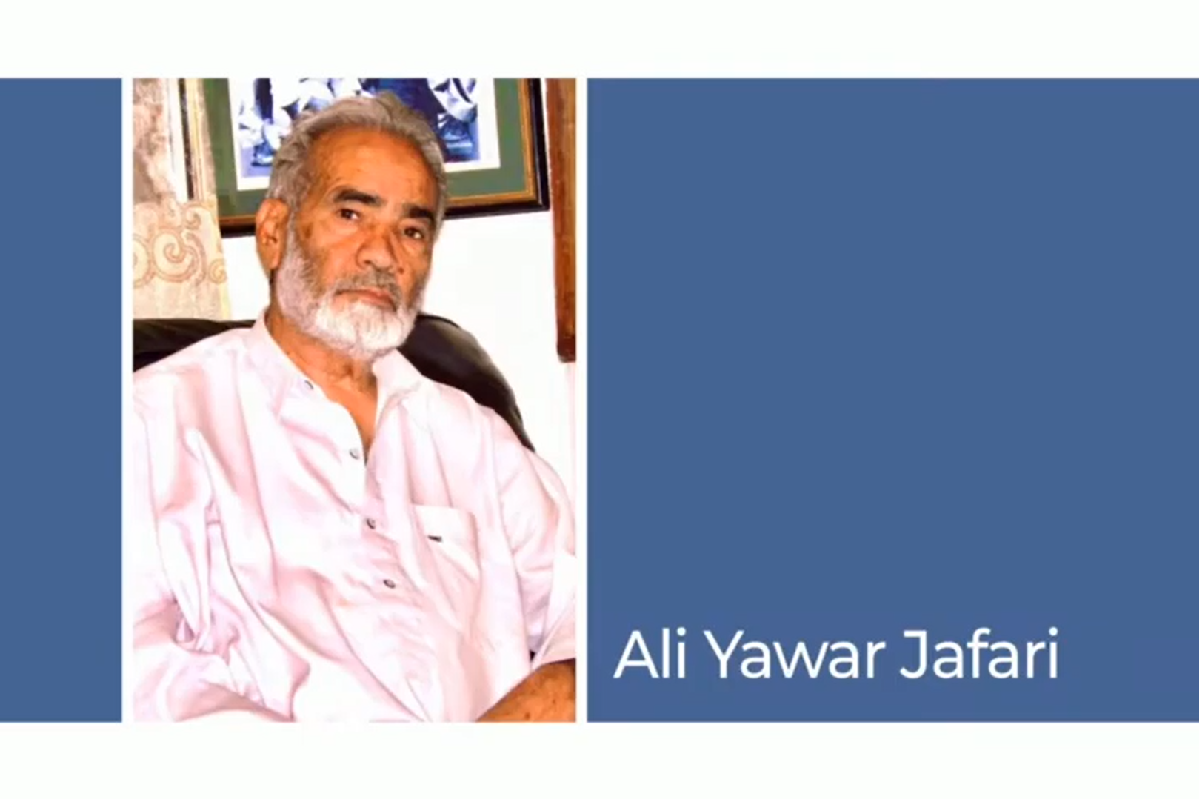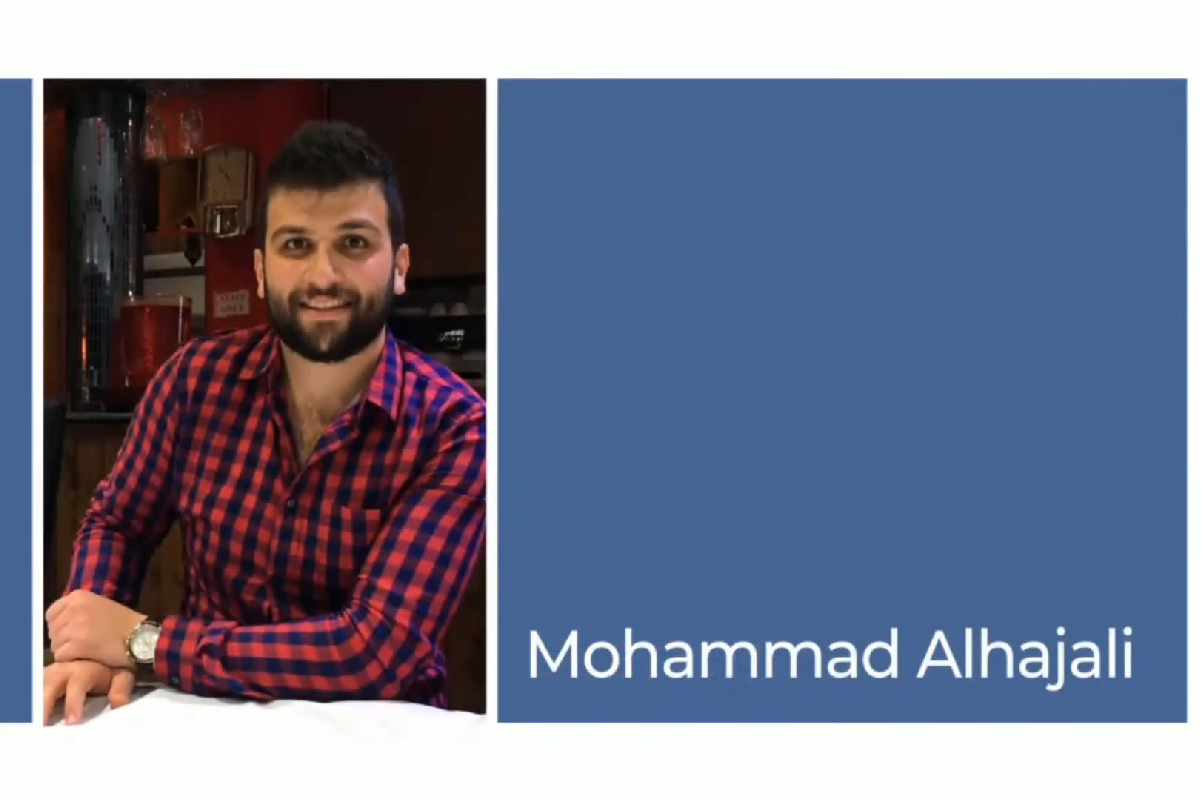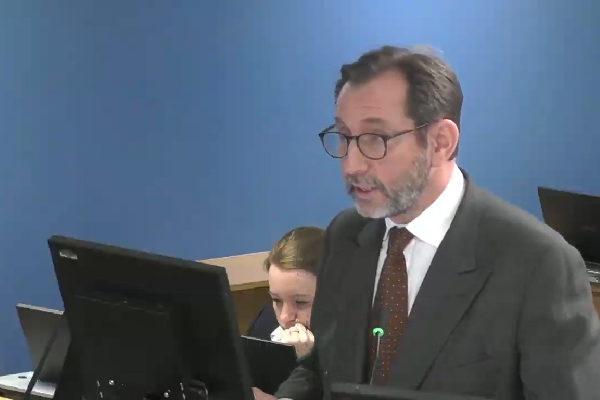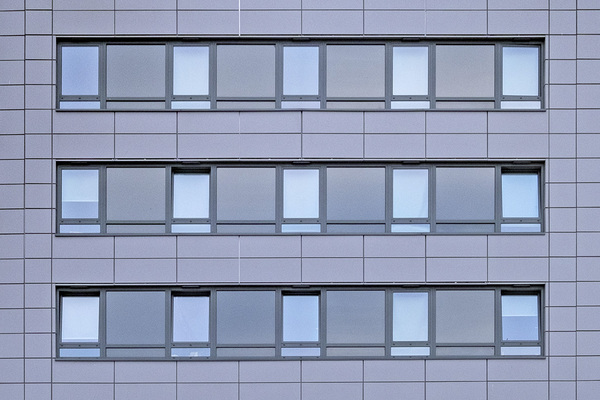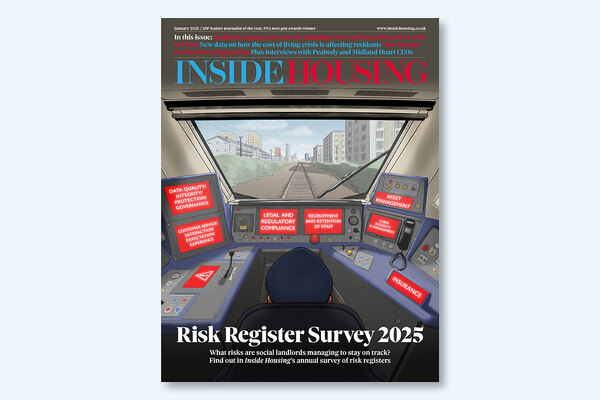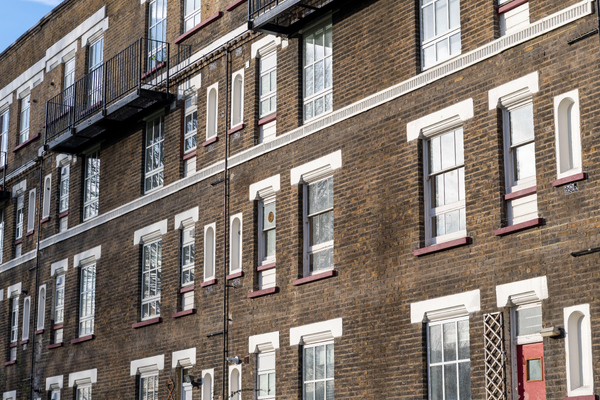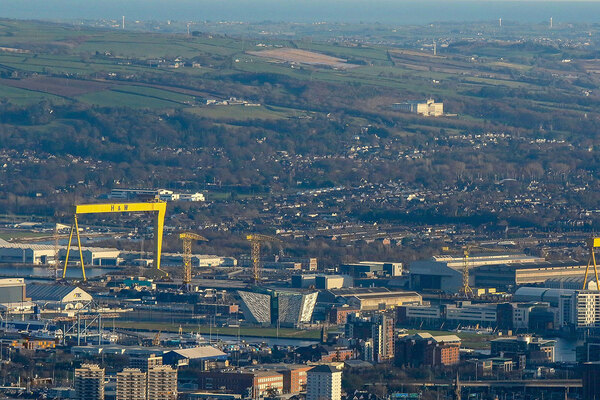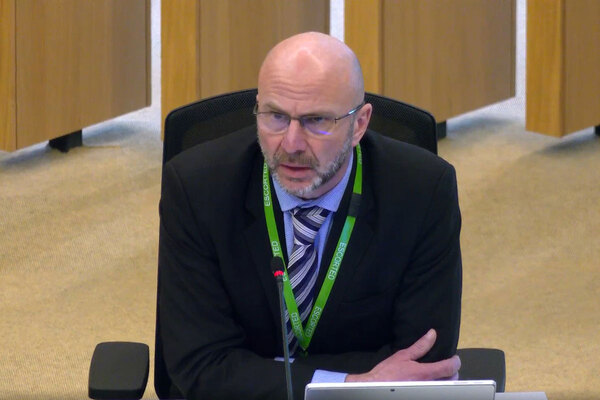Grenfell Tower Inquiry diary week 84: ‘Every decision affects someone who is an adored child, a beloved sister, a respected uncle, a needed mother’
The final week of oral evidence for the Grenfell Tower Inquiry’s second phase contained more heartbreaking evidence about the deaths in the tower. Peter Apps reports
Across 308 days, spread over two-and-a-half years, the second phase of the Grenfell Tower Inquiry has been an enormous, devastating excavation of the reasons why a tower block in west London ended up becoming a death trap for 72 people.
The inquiry’s oral evidence is now complete. The final week saw presentations covering the circumstances of the deaths of 23 victims delivered to the panel.
As explained in prior diaries, this is being done in the hope that it will relieve the families of the need for a full re-examination of the distressing evidence at inquest hearings after the inquiry report is published.
At the end of the evidence, inquiry chair Sir Martin Moore-Bick did not give an estimate for the publication of the final report, but warned writing it would be a lengthy process.
The inquiry will return in the week commencing 7 November for overarching closing statements.
As ever, this evidence can be upsetting and a trigger warning is appropriate. The details below are, by their nature, upsetting.
‘The immediate cause of death here was caused by the accidental opening of the lift, a lift that remained outside of regulated control’
Three of the presentations on Tuesday covered a group of residents who are believed to have died in the relatively early stages of the fire, after attempting to escape the building in the lift.
One of these was Khadija Khalloufi, a 52-year-old Moroccan-born woman who had lived in a flat on the 17th floor of the tower since 1990 with her husband Sabah and his son, Alex, who she treated as her own. Family lawyer Danny Friedman QC said Khadija “selflessly cared for all of those around her”.
Khadija and Sabah were roused by neighbours on their floor and warned there was a fire in the block at around 1.25am. They tried to leave the building.
However, on their way down the stairs, they became separated. It appears Khadija stopped on the 11th floor to alert a friend and her children of the fire.
Also on this floor was Ali Yawar Jafari (pictured above) and his daughter Nadia. Aged 81, Ali Yawar had some serious health problems and was unable to descend the stairs unassisted.
The fire had broken into Ali Yawar’s flat through the kitchen window at around 1.20am. Nadia had roused her father and was helping him to escape.
“Once in the lobby, at Mr Jafari’s insistence, they knocked on neighbours’ doors and called a family friend in the tower to warn him,” Mr Friedman said.
Along with Khadija, they then entered the lift. Already inside were two other residents, one of whom was Mohamednur Tuccu.
Mohamednur, who grew up in Eritrea but fled to the UK in the 1990s, was said to be “affectionately remembered by his family for being well mannered, hardworking and, above all, kind”. He was 44 on the night of the fire.
He had become separated from his family, who he lived with on the 19th floor after they had fled in panic when the fire affected their flat relatively early in the blaze. Tragically, his wife, three-year-old daughter and a cousin who was visiting them were among a group who went up to the top floor, where they would later die.
There were now five people in the lift: Mohamednur, Khadija, Ali Yawar and Nadia Jafari and one other resident.
The inquiry has previously heard that when firefighters arrived at the tower, one of the first things they did was try to activate an override switch which would have put the lift under their exclusive control and prevented residents using it unaided.
Evidence as to why they could not remains to be settled. The view of an inquiry expert is that the ‘drop-key’ the firefighters tried to use did not fit. But this has been challenged by the Fire Brigades Union, which suggested the mechanism failed because it had been contaminated with dust and debris during the building work.
What is clear is that a simpler, safer key mechanism could have been installed in the tower. But this was not done due to fears that it would be used by “unauthorised persons” who bought a skeleton key from the internet.
The result was that the lifts remained in service, exposing residents to “the fatal risk of being taken to the floor affected by fire”.
This is precisely what happened. The lift stopped unexpectedly at Floor 10. Conditions on this floor were dire.
The fire had reached one of the flats on Floor 10 at around 1.20am, which caused the occupants to flee. But their door did not have a working self-closing device, and smoke poured into the lobby.
“Dense, toxic smoke flooded in and filled the lift,” said Mr Friedman. “The evidence of those that survived suggests that the smoke was so dense that it entirely eclipsed the lift lights. It had a bitter, chemical smell and made it very difficult to breathe.”
It is estimated that the doors were open for around 25 seconds before they closed and the lift descended again. But in this time, in the dark and confusion, Khadija, Ali Yawar and Mohamednur exited.
Smoke conditions were so serious on this floor that the inquiry’s toxicology expert estimated they could cause collapse within 30 seconds to two minutes.
It is estimated that Ali Yawar collapsed almost immediately, while the two others collapsed shortly afterwards while searching for the exit to the stairs.
Meanwhile, Sabah was outside the building, telling emergency services that he had lost his wife. Nadia Jafari and her sister Maria, who had left moments earlier with their mother, tried to re-enter the tower when they realised their father was not with them but were stopped by police.
They said their father was missing and “were told not to worry and that the firefighters would bring everyone downstairs”.
“As a matter of fact, there is no evidence of [LFB] deployments to Floor 10 during much of the next hour, despite the Jafari sisters’ information and a number of residents making emergency calls from that floor,” said Mr Friedman. The three bodies were later found on the 10th floor by firefighters.
The inquiry has previously heard that as well as the issue with the key switch, lifts were also not upgraded to ‘firefighting’ standards during refurbishment work in 2004, which meant they could not have been used by firefighters during the blaze.
“The immediate cause of death here was caused by the accidental opening of the lift, a lift that remained outside of regulated control, and the consequences that flowed from those deficiencies,” said Mr Friedman.
‘They can be perhaps called the forgotten ones from Flat 113’
Among the most harrowing evidence of the entire inquiry relates to four residents, including two-year-old Jeremiah Deen and his mother Zainab, who died in Flat 113 on the 14th floor.
This was the home to none of them, but where they had been moved by firefighters who reached their floor earlier in the night and felt unable to guide them safely out of the building.
The story of these residents’ deaths was told on Thursday, and began with Mohammad Alhajali (pictured above), a 23-year-old Syrian man who travelled to the UK in 2014 with his brothers to escape the civil war.
He moved into Flat 112 with his brother Omar and their childhood friend Mahmoud Al-Karad (who was working a nightshift when the fire happened) in September 2016. At the time of the fire, Mohammad was studying for a civil engineering degree and was engaged to be married.
He was described as “an unusually charismatic person, much loved and valued for his selflessness, compassion and strength of personality”.
“Sir, you will recall being told of Mohammad’s smile, his unrivalled joy for life and his dreams for the future, including his dream that one day he would be able to bring his whole family together in one place, where they could settle and live their best life. This was a young man who was well loved and loving,” said Mr Friedman.
When flames reached Flat 116 on the 14th floor at approximately 1.25am, the family who lived there fled. But like with so many other front doors in the tower, there was no working self-closing device on their front door, which meant the landing quickly filled with choking black smoke.
The brothers tried to leave, but were prevented from doing so by the smoke. They shouted for help from the window and a firefighter told them firmly to stay put.
Also on the floor was Denis Murphy, who lived in Flat 111. Aged 56 at the time of the fire, he was said to have come from “a large, loving Irish family”.
Denis (pictured above) was a family-oriented man who would set a day each week to phone each member of his family “to make sure that he had time for a proper chat with all of them”.
“The loss of Denis has been immeasurable for the Murphy family,” said family lawyer Allison Munroe QC.
He loved Grenfell Tower, where he had lived for three decades, but believed the refurbishment was “a form of social cleansing”. “My Dad was convinced that [the council] were trying to socially cleanse the area of the ordinary people, like him who lived there,” said his son Peter in a witness statement.
Denis, who suffered from arthritis and breathing difficulties, was one of the many residents of the tower with vulnerabilities.
He made his first 999 call on the night of the fire at 1.25am. He was advised to stay where he was, with the call handler wrongly telling him that the stairwell was full of smoke. It was in fact relatively clear at this point, and many residents evacuated down it from higher floors in the tower.
Denis’ flat rapidly filled with smoke, and he told the emergency services on another call at 1.40am that he was locked in a bathroom. His relatives also called 999 on his behalf.
Nearby in Flat 115 were Zainab Deen and Jeremiah. “Zainab Deen loved being a mother. Jeremiah was truly her pride and joy,” said Ms Munroe.
Born in Sierra Leone and 32 at the time of the fire, Zainab was described as “a lively personality, and her great sense of humour was enjoyed by all who came across her”.
“Zainab was very kind, liked helping people including those who had nowhere to go, she would help homeless people in the community and offer them her sofa/her own home while they got themselves sorted,” said one of her friends in a witness statement.
Zainab (pictured above) was also, Ms Munroe said, a woman who had overcome suffering. She had learning difficulties and mental health problems and had recently escaped “an unhappy and tormented marriage”.
At the time of the fire, her life was turning a corner. After a period of homelessness and unemployment, she had a tenancy in Grenfell Tower and was due to be starting a job as a waitress on Monday 19 June. A friend remembered her “dancing for joy at the prospect of a new job”.
Jeremiah was two at the time of the fire and was described as a “very clever and a happy child”. He was beginning to explore and appreciate the world around him, and he loved football.
“Two years old,” said Ms Munroe. “That’s an age where children are walking and talking and sometimes talking back. They are growing out of their infancy and into childhood.
“However, they’re still very young, and when a two-year-old cries, they cry like a baby. When they’re in pain, they show their pain like babies. They want to be held in your arms and cuddled and told everything will be alright.”
Zainab made her first 999 call at 1.29am and several more throughout the night. She repeated that she was trapped, that smoke was coming into the flat and that she had a baby.
She was repeatedly told that the fire was in fact on the fourth floor, to put wet towels around doors and stay where she was.
“Effectively, Zainab is being told that she is wrong and she should disbelieve the sight of her own eyes and the smells of her own nose and the sounds of her own ears,” said Ms Munroe.
“One can only imagine how those words, ‘You’re wrong, the smoke, the fire, is not on your floor’ would have been received by someone like Zainab, who is learning disabled with a history of mental ill health.”
At 1.51am, four firefighters who had been sent to rescue Denis reached the 14th floor and found eight residents trapped in the various flats. But they did not attempt to evacuate them. Instead, they told them all to gather in Flat 113, where the smoke was least severe.
“Our decision to leave the eight people in Flat 113 was because of the conditions in the stairwell, where there was thick black smoke. If any one of them inhaled the smoke, that individual would not last long and pass out. I don’t think leading eight people down to the ground floor is an option because they can’t hold their breath for that long, it is just leading them to their death,” said one of these firefighters in a witness statement.
The firefighters radios were also not working when they tried to call for assistance and they were running low on air.
Mohammad and Omar asked them to evacuate them. But they were told it was unsafe in the stairs and they would not be able to breathe
“Once in Flat 113, the brothers pointed out to the firefighters the extent of the fire from the windows on both sides of the flat, but the decision remained that they were not to leave, despite their wish to do so,” said Mr Friedman.
According to the inquiry’s expert toxicologist, escape would have been possible at this time.
Images from the wall on the second floor, which was being used as the base of the firefighting operation in the tower, showed that the flat and floor number and the fact that eight persons were present was scribbled on the wall by one of the firefighters after he descended.
However, this information became muddled as this base of operation moved both up to the third floor and then down again to the ground throughout the night.
No crew was dispatched to rescue them, but at 2.23am, a crew returning from a higher floor entered the 14th floor and Flat 113. They did not rescue them nor is there any evidence that they reported their presence to their seniors.
“The other four occupants − Denis Murphy, Mohammad Alhajali, Zainab Deen and Jeremiah Deen − were left behind”
Two crews were deployed to the 14th floor at 2.27am and 2.31am. Neither had clear briefings that there were eight people trapped in Flat 113 and one crew had been sent to entirely the wrong flat.
Nonetheless, one of these crews arrived at the flat, knocked on the door and shouted “fire brigade”.
“The events that follow remain the subject of an evidential dispute,” said Mr Friedman. “However, the tragic result is clear: four of the occupants… were guided down the stairs by the firefighters, while the other four occupants − Denis Murphy, Mohammad Alhajali, Zainab Deen and Jeremiah Deen − were left behind.”
There was no search of the flat before the firefighters left, as is required by brigade policy. The reasons for this failure will be considered further in the final report.
When Omar reached the ground floor at 02.45am and discovered that his brother had not come down with him, he was seen on CCTV footage to immediately point frantically upstairs, imploring firefighters to return to the flat.
Omar and his friend Mahmoud, who had by now returned from his nightshift, repeatedly told emergency services personnel about those left behind.
At around 2.30am, Denis’ family drove to the tower. They called Denis on the way and he spoke to his son, Peter. ”Boysie, Boysie, I can’t breathe, I’m stuck, I can’t get out, I don’t know what to do,” Denis told him.
“This was the very first time and indeed the last time that I had heard my Dad so scared,” said Peter in his witness statement.
When the family reached the scene, they also repeatedly told emergency services where Denis was trapped.
Further crews were deployed to the flat, but they were either waylaid by residents they found on the stairs or “inexplicably redeployed to fight fire and carry out general search and rescue on lower floors”.
The first phase report has already branded the failure to use crews with extended duration breathing apparatus to rescue them as “a mystery”.
Zainab and Jeremiah also remained trapped in the flat. “One thing that has been absent in the main part from the inquiry are the sounds of the night,” said Ms Munroe. “For Zainab, the sounds of the night would have been particularly terrifying. They were loud, they were constant and unrelenting, and they went on for hours and hours and hours. That is what Zainab and indeed two-year-old Jeremiah would have been exposed to.”
Zainab made several further 999 calls after being moved to Flat 113, the last in which she is clearly identified being at 3.17am. By this stage she was described as sounding “hysterical”.
She also had a final call with a firefighter outside the tower who was handed a phone by her friend Francis who had been speaking to her.
During this call, he heard Jeremiah coughing and crying before falling silent. “My boy’s dead,” Zainab said. “I want to be with my son.”
Shortly afterwards, this firefighter was informed by a colleague that crews were unable to get beyond the 12th floor. “I knew I couldn’t tell her this,” he said in a witness statement. “I just couldn’t tell her that so I basically lied to her and continued to tell her that we were coming for her.”
She lost consciousness during the call and eventually stopped responding. Denis and Zainab are estimated to have died at 3.45am. Jeremiah is estimated to have died slightly earlier.
“Zainab’s greatest fear was losing Jeremiah,” said Ms Munroe. “That single thought occupied her final hours on this earth. Jeremiah and Zainab died as they lived: inseparable. They will be together forever.”
The last person to speak to Mohammad was his brother Hashem, who had arrived at the tower during the fire.
“Mohammad was crying and asking to speak to their mother, but Hashem was worried that, if he ended the call, he would not get back through,” said Mr Friedman. “He told Mohammad he could speak to their mother when he got out. Mohammad also asked him to play the Qur’an to him, and Hashem managed to do that by playing it from a speaker on his phone.”
Mohammad is estimated to have died between 4am and 4.26am.
The four left in Flat 113 were described as “the forgotten ones” by Ms Munroe.
Ms Munroe concluded her presentation for Denis by reading a statement from his family. “Denis, we wish you knew how much of you there is in everything we do. It can be the smallest thing, but you’re there, under the surface somewhere. We wish you knew how we carry you with us everywhere, always. Our precious memories of you will be cherished forever.”
‘I could have got out a long time ago, we could have, but they said, “Stay in the flat, stay in the flat”’
The final evidence to the inquiry was the heartbreaking story of the El-Wahabi family, who died together in their 21st floor flat.
“There is a city on the north-west coast of Morocco where the Loukkos River meets the Atlantic Ocean, the crowded streets teem with life and the white-fronted houses rise in tiers precariously above the city,” said Ms Munroe.
“From a distance, it seems almost as if they would tumble into the waters, where they meet the dazzling blue sea below.
“This place is called Larache, and it holds a special place in the hearts of many in the expat Moroccan community in London. For the El-Wahabi family, it is particularly dear because this wonderful coastal city was the birthplace of both Abdulaziz and Faouzia El-Wahabi.”
The couple, who had lived in Flat 182 in Grenfell Tower since 1996, had three children: Yasin, 20, Nur Huda, 15, and Mehdi, 8 (pictured above). Abdulaziz’s sister, Hanan Wahabi, lived with her family on the ninth floor of the tower.
“These two families were as close as a sibling family could possibly be: one family, two branches,” said Ms Munroe.
Abdulaziz, who had been a hospital porter at University College London for 22 years, was fondly described as “never short of a word or two”.
“Whoever knew Abdulaziz would know just how much he could talk. For our mother, who loved his company, she could listen to him all day, and now she is at a loss,” recalled his brother Hamed.
“To remember Aziz is to remember, ‘Awright, mate! Hello, Jane! Hello, sis!’ He had a twinkle in his eye and did not take life too seriously,” recalled one of the nurses at the hospital. He was described as the “glue” in the family.
Faouzia was described as a “calm, caring and grounded woman”, possessing “serious culinary skills” and “able to create mouthwatering dishes from all over the world”. She also knitted and crocheted clothes that were sold at Portobello Road Market, with the profits going back into the community.
Yasin, the eldest child, was described as “a local celebrity” who had “inherited his father’s gift of the gab”. “This was a young man who was going places and he was going to make a mark,” said Ms Munroe.
Nur Huda was described as “warm and good spirited” and an “incredibly skilled, aggressive and agile” footballer. She had recently sat her GCSEs. After the fire, her aunt Hanan collected her results. She had got an A in additional science, and Bs in core science, history, PE, maths, English language and literature . “Her parents would have been so proud of her,” said Hanan.
Mehdi “was the baby of the family, and everyone just loved him”.
“Mehdi had an amazing imagination and was a wonderful storyteller. Again, a chip off the old block, he had the gift of the gab and talked non stop,” said Ms Munroe.
On the night of the fire, all five members of the family were at home.
Throughout the night, they made multiple calls to the emergency service – being advised to stay put.
“A striking feature of all these telephone calls by the El-Wahabi family is how calm and polite, almost to the point of being apologetic, they are,” said Ms Munroe.
At the same time, they also took calls from their family members outside the tower who desperately urged them to leave.
As they told the emergency call handlers that smoke and flame were entering their flat, they were repeatedly told that firefighters knew where they were and would reach them. “Believe me,” the call handler said at 2.21am.
Finally, in a call at 2.43am, after the stay put advice had been dropped, the family were told to flee.
By this point, they were hiding under a bed together, with smoke and flame spreading through their flat.
“I could have got out a long time ago, we could have but they said, ‘Stay in the flat, stay in the flat,’” Abdulaziz told the call handler.
The call handler then told them they had to get out before saying: “I’m going to have to leave you… we’ve got so many calls coming in.”
“Flat 182 should have been a priority for evacuation as it was known that there were children in the flat,” said Ms Munroe.
A crew was finally deployed at 2.44am to reach them, but they did not get to the 21st floor, after finding some casualties in the stairs. The family made no further calls. It is estimated they could have escaped until as late as 2.45am and survived.
In contrast, Hanan and her family on the ninth floor had fled the tower in the early stages without calling 999 because fire had penetrated their flat very quickly.
“One branch of the family survived,” said Ms Munroe. “They became aware of the fire early on and fled their flat shortly after seeing the flames. They evacuated, they survived, they lived to mourn their loss and question why.
“The other branch of the family on the 21st floor did not survive. Abdulaziz and his entire family, his beloved wife, his cherished three children, they all died that fateful night.”
“When Grenfell Tower caught alight on 14 June 2017, the news filtered through across the globe. People watched and heard about the horrors. They cried for strangers they had never met,” Ms Munroe added.
“One part of the globe was particularly hurt: the city of Larache mourned. It mourned for its lost sons and daughters, for friends and families taken too soon, for people who would never again see the beautiful city, its golden beaches and its clear, azure blue waters. For the people who had lost their futures, and who would never realise their hopes and aspirations. For the people whose dreams would never be fulfilled. For Abdulaziz, Faouzia, Yasin, Nur Huda and Mehdi El-Wahabi.”
‘Every decision affects someone somewhere who is an adored child, a beloved sister, a respected uncle, a needed mother’
The inquiry also heard presentations for Amal Ahmedin, Amaya Tuccu Ahmedin and Amna Mahmud Idris, the family of Mohamednur Tuccu and still-born baby Logan Gomes. These can be found in the transcript here.
The presentations for Isaac Paulos, Vincent Chiejina, Joseph Daniels, Steve Power, Abufras Mohamed Ibrahim, Isra Ibrahim and Fathia Ahmed Elsanousi can be read here.
At the end of the evidence, lead counsel to the inquiry Richard Millett QC (pictured above) gave some closing remarks.
“There may have been times in the past three weeks when you were struck by the vast distances between the final terrible experiences of those who died, what they saw, smelt, heard, felt, feared and said in those last hours, and the matters that we have investigated over the past two-and-a-half years in this phase,” he said.
“How great is the gulf between, for example, what Jessica Urbano Ramirez experienced in her final hour and the filler debate?
“What did Hamid Kani’s end have to do with the NBS specification? Raymond Bernard’s final moments with the evolution of GRA 3.2?
“The Choucairs deaths with Class 0? Hesham Rahman’s with the Lakanal case study? What did Arconic’s Test 5B have to do with Mehdi El-Wahabi’s last moments?
“At times in these weeks you might have wondered whether we were sitting in a completely different room listening to something wholly unrelated to all the other threads making up the fabric of this disaster, and it is this perception of distance in itself which is an important discovery in our work.
“It tells us how so many actions and omissions of so many people − working in offices and on their smartphones, in meeting rooms, on sites, in testing houses, discharging endless strings of emails − have consequences perhaps far remote from their consciousness, but which were always objectively present in the perpetually contingent.
“It also tells us that every decision, every act, omission, interpretation, understanding, practice, policy, protocol, affects someone somewhere, someone who is unknown and unseen, but who is an adored child, a beloved sister, a respected uncle, a needed mother.”
At the end of his comments, Mr Millett invited those present – on the final day, a crowd of lawyers, journalists, bereaved residents and survivors – to stand and observe a 72-second silence for those who died.
The proceedings closed with their names being read. It feels fitting, after 84 weekly diaries stretching over two-and-a-half years, that we sign off in the same way.
These are their names:
Mariem Elgwahry, Eslah Elgwahry, Fatemeh Afrasiabi, Sakina Afrasehabi, Mohamed Neda, Rania Ibrahim, Hania Hassan, Fethia Hassan, Debbie Lamprell, Jessica Urbano Ramirez, Hamid Kani, Berkti Haftom, Biruk Haftom, Raymond Bernard, Abdeslam Sebbar, Hesham Rahman, Husna Begum, Kamru Miah, Mohammed Hamid, Mohammed Hanif, Rabeya Begum, Majorie Vital, Ernie Vital, Marco Gottardi, Gloria Trevisan, Sirria Choucair, Bassem Choukair, Nadia Choucair, Mierna Choucair, Fatima Choucair, Zainab Choucair, Hashim Kedir, Nura Jemal, Yahya Hashim, Firdaws Hashim, Yaqub Hashim, Gary Maunders, Anthony Disson, Ligaya Moore, Sheila, Victoria King, Alexandra Atala, Mary Mendy, Khadija Saye, Farah Hamdan, Omar Belkadi, Malak Belkadi, Leena Belkadi, Logan Gomes, Ali Yawar Jafari, Khadija Khalloufi, Mohamednur Tuccu, Amal Ahmedin, Amaya Tuccu Ahmedin, Amna Mahmud Idris, Isaac Paulos, Vincent Chiejina, Joseph Daniels, Steve Power, Abufras Ibrahim, Isra Ibrahim, Fathia Ahmed Elsanousi, Mohammad Alhajali, Denis Murphy, Zainab Deen, Jeremiah Deen, Abdulaziz El-Wahabi, Faouzia El-Wahabi, Yasin El-Wahabi, Nur Huda El-Wahabi, Mehdi El-Wahabi, Maria del Pilar Burton.
Grenfell Tower Inquiry phase two: weekly diaries
Module one: the refurbishment
Week one: A vivid picture of a broken industry
After a week of damning revelations at the opening of phase two of the Grenfell Tower Inquiry, Peter Apps recaps the key points
Click here to read the full story
Week two: What is the significance of the immunity application?
Sir Martin Moore-Bick has written to the attorney general requesting protection for those set to give evidence at the Grenfell Tower Inquiry. Peter Apps explains what the move means
Click here to read the full story
Week three: Architects of misfortune
This week saw the lead architects for the Grenfell Tower refurbishment give evidence to the inquiry. Peter Apps runs through the key points
Click here to read the full story
Week four: ‘I didn’t have any perception that it was the monster it’s become’
The architects continued to give evidence this week, outlining a lack of understanding of the fire risk posed by the cladding materials and its design. Nathaniel Barker reports
Click here to read the full story
Week five: ‘No adverse effect in relation to external fire spread’
As the Grenfell Tower Inquiry returns from its long absence, Peter Apps recaps the key points from a week of important evidence from the fire consultants to the refurbishment
Click here to read the full story
Week six: ‘I can’t recall any instance where I discussed the materials with building control’
Nathaniel Barker summarises what we learned from fire engineers Exova, architects Studio E and the early evidence from contractor Rydon
Click here to read the full story
Week seven: ‘I do not think I have ever worked with a contractor operating with this level of nonchalance’
Two key witnesses from contractor Rydon gave evidence this week. Peter Apps recaps some of the key points from a revealing week of evidence
Click here to read the full story
Week eight: ‘It haunts me that it wasn't challenged’
Four witnesses from contractor Rydon gave evidence this week. Lucie Heath recaps what we learned on the last week of evidence before the inquiry breaks for five weeks
Click here to read the full story
Week nine: ‘All I can say is you will be taken out for a very nice meal very soon’
This week the inquiry heard evidence from witnesses at Harley Facades, the sub-contractor responsible for Grenfell Tower’s cladding. Peter Apps recaps the key points
Click here to read the full story
Week 10: ‘As we all know, ACM will be gone rather quickly in a fire!’
As the Grenfell Tower Inquiry entered its 10th week, Jack Simpson recaps the key points from a week of important evidence from the refurbishment’s cladding contractor
Click here to read the full story
Week 11: ‘Did you get the impression Grenfell Tower was a guinea pig for this insulation?’
With witnesses from the cladding subcontractor, the firm which cut the deadly panels to shape and the clerk of works which inspected the job giving evidence this was week full of revelations. Peter Apps recaps the key points
Click here to read the full story
Week 12: ‘Would you accept that was a serious failing on your part?’
With the surveyor who inspected Grenfell Tower for compliance giving evidence, this was a crucial week from the inquiry. Dominic Brady and Peter Apps report
Click here to read the full story
Week 13: ‘Value for money is to be regarded as the key driver for this project’
With consultants to Kensington & Chelsea Tenant Management Organisation (KCTMO) giving evidence, attention at the Grenfell Tower Inquiry turned for this first time to the actions of the TMO and the council. Peter Apps reports
Click here to read the full story
Week 14: ‘Did it not occur to you at this point that your budget was simply too low?’
This week, for the first time in phase two, the inquiry heard from Kensington & Chelsea Tenant Management Organisation, the landlord that oversaw the fatal refurbishment of Grenfell Tower. Lucie Heath reports
Click here to read the full story
Week 15: ‘Have you ever informed the police that you destroyed documents relevant to their investigation?’
Witnesses from the Kensington and Chelsea Tenant Management Organisation (KCTMO) gave evidence for a second week, which began with a shocking revelation about withheld and destroyed evidence. Peter Apps recaps
Click here to read the full story
Week 16: ‘I conclude this was very serious evidence of professional negligence’
This week saw members of Kensington & Chelsea Tenant Management Organisation finish giving evidence, before the inquiry’s expert witnesses took the stand to make some highly critical assessments of the work they had seen before and during the refurbishment of Grenfell Tower. Jack Simpson recaps
Click here to read the full story
Grenfell Tower: a timeline of the refurbishment
Following the conclusion of module one of the Grenfell Inquiry’s second phase, Peter Apps presents a timeline of the key moments during the fatal refurbishment of the west London tower block
Click here to read the full story
Module two: the cladding products
Week 17: ‘It’s hard to make a note about this because we are not clean’
The start of the second module of the Grenfell Tower Inquiry phase two came with some huge revelations about the companies that sold the products used in the cladding system. Peter Apps reports
Click here to read the full story
Week 18: ‘It was just reckless optimism wasn't it?’
As the inquiry began cross-examining witnesses for the second module of its phase two work, the picture surrounding just how Grenfell Tower ended up wrapped in such dangerous materials became a little clearer. Nathaniel Barker was keeping an eye on proceedings
Click here to read the full story
Week 19: ‘And that was intentional, deliberate, dishonest?’
The Grenfell Tower Inquiry this week heard the shocking story of how the insulation manufacturer “manipulated” official testing and marketed its product “dishonestly”. Peter Apps tells the story
Click here to read the full story
Week 20: ‘We were outed by a consultant who we then had to fabricate a story to’
This week the inquiry investigated the actions of Kingspan – the manufacturer of one of the insulation products used in the tower’s cladding system. Dominic Brady reports
Click here to read the full story
Week 21: ‘It’s there in black and white isn't it? We see a complete absence of any consideration of life safety’
The story of insulation giant Kingspan’s testing and marketing of its combustible insulation for high rises was unpacked in minute detail this week. Peter Apps reports
Click here to read the full story
Week 22: ‘All we do is lie in here’
In the third week of evidence from insulation giant Kingspan, the inquiry continued to uncover shocking details about the firm’s behaviour both before and after the Grenfell Tower fire. Lucie Heath reports
Click here to read the full story
Week 23: ‘That would have come as an earthquake to you at the time, would it not?’
This week the inquiry took its deepest dive yet into the inner workings of the cladding manufacturer whose product has been blamed for the terrible spread of fire up Grenfell Tower. Nathaniel Barker reports
Click here to read the full story
Week 24: ‘Do you accept that Test 5B was Arconic's deadly secret’
The president of the firm that made and sold the cladding panels installed on Grenfell Tower was asked to account for the apparent concealment of “disastrous” fire tests on the product this week. Peter Apps reports
Click here to read the full story
Week 25: ‘This is quite an incredible list of omissions and missed instances, isn’t it?’
This week the Grenfell Tower Inquiry heard its first witnesses from the Building Research Establishment (BRE) - the testing house which carried out key fire tests on the Kingspan and Celotex insulation products which were later used on Grenfell Tower. Peter Apps reports.
Click here to read the full story
Week 26: 'You were taking an enormous risk, weren't you?'
Week 26 at the Grenfell Tower Inquiry was a key moment in understanding how dangerous products used on the tower came to be accepted by industry professionals. Dominic Brady reports
Click here to read the full story
Week 27: ‘What will happen if one building made out [of] PE core is in fire and will kill 60 to 70 persons?’
The most explosive evidence this week at the Grenfell Tower Inquiry came from those who did not attend, as the evidence which would have been presented to Arconic witnesses was displayed in their absence. Peter Apps reports
Click here to read the full story
Week 28: ‘This is a serious safety matter’
This week the Grenfell Tower Inquiry zeroed in on the British Board of Agrément, the body that produced “misleading” certificates which inspired trust in both the cladding and insulation used on the tower. Lucie Heath reports
Click here to read the full story
Week 29: ‘Is it true that Kingspan’s position… was to do its best to ensure that science was secretly perverted for financial gain?’
The final week in this section of the Grenfell Tower Inquiry primarily examined the attempts by insulation manufacturer Kingspan to lobby government after the fire. Peter Apps reports
Click here to read the full story
How the products used in Grenfell Tower's cladding system were tested and sold
As the section of the Grenfell Tower Inquiry examining how the products used in the cladding system were tested, marketed and sold comes to a close, Peter Apps summarises what we have learned about each of the products included in the system
Click here to read the full story
Module Three: the management of the tower
Week 30: ‘There is certainly a high probability that in the event of a fire the whole building can become an inferno’
The focus of the inquiry shifted this week to the actions of the social housing providers responsible for maintaining Grenfell Tower. Pete Apps recaps what we learned
Click here to read the full story
Week 31: ‘If we cannot get out people will die’
This week saw the former residents of Grenfell Tower enter the witness box to tell of their experiences attempting to raise complaints with the council and its managing agent. Pete Apps reports
Click here to read the full story
Week 32: ‘Let's hope our luck holds and there isn't a fire’
This week saw the return of the landlord of Grenfell Tower, Kensington and Chelsea Tenant Management Organisation (KCTMO), as senior staff members attempted to explain how vital fire safety protections at the block were allowed to fall into disrepair. Lucie Heath reports
Click here to read the full story
Week 33: ‘Isn't that a serious gap in the scope of a policy meant to safeguard vulnerable people?’
A slightly disjointed week at the Grenfell Tower inquiry saw further evidence from staff at building manager Kensington and Chelsea Tenant Management Organisation (KCTMO) interspersed with the views of a cladding expert. Peter Apps reports
Click here to read the full story
Week 34: ‘Some members of the community are doing their best to spread false information’
Jack Simpson covers all the major revelations from the past week of evidence at the Grenfell Inquiry, including evidence from Laura Johnson, director of housing at the Royal Borough of Kensington and Chelsea.
Click here to read the full story
Week 35: ‘I really didn’t like the champagne’
This week the Grenfell Tower Inquiry saw council witnesses, including former deputy leader Rock Feilding-Mellen and leader Nicholas Paget-Brown, questioned about their role in the story for the first time. Peter Apps reports
Click here to read the full story
Week 36: ‘Is that not a very incurious approach for a fire risk assessor?’
This week the Grenfell Tower Inquiry scrutinised the work of Carl Stokes, the man hired to carry out fire risk assessments for the block. Nathaniel Barker reports
Click here to read the full story
Week 37: ‘In giving that advice, weren’t you acting beyond your knowledge and expertise?’
A curtailed week at the Grenfell Tower Inquiry saw fire risk assessor Carl Stokes grilled over advice he gave regarding the tower’s cladding. Peter Apps reports
Click here to read the full story
Week 38: ‘Well it’s a bit more than that, isn’t it. He’s suggesting that you tell the LFB a lie’
The inquiry heard the mammoth cross-examination of KCTMO’s health and safety manager Janice Wray this week. Peter Apps reports
Click here to read the full story
Week 39: ‘What you said there was a grotesque understatement’
This week the inquiry continued to hear from former employees of Kensington and Chelsea Tenant Management Organisation, as well as two employees from the London Fire Brigade. Lucie Heath reports
Click here to read the full story
Week 40: ‘An exercise in concealment and half-truth’
Former KCTMO chief executive Robert Black gave his evidence to the inquiry this week and was asked to account for the various failures described over the previous six weeks. Peter Apps and Nathaniel Barker report.
Click here to read the full story
Week 41: ‘We should do nothing. This is not the sort of website we should be responding to’
This week saw the return of Robert Black, chief executive of Kensington and Chelsea Tenant Management Organisation (KCTMO), before the inquiry turned its attention to the defective smoke control system in the tower. Dominic Brady reports
Click here to read the full story
Week 42:‘They would leak as much as they leaked. They were what they were’
The Grenfell Tower Inquiry continued its in-depth investigation of the tower’s non-compliant smoke control system this week, with evidence from the various contractors involved in delivering it. Pete Apps reports
Click here to read the full story
Week 43:‘Contractors at the time were not generally aware of the importance of leaving holes unsealed’
This week the inquiry focused on two of the more overlooked areas of the Grenfell Tower fire, with evidence focusing on the gas pipelines and lifts within the west London block. It was a packed week, with five witnesses giving evidence. Jack Simpson reports
Click here to read the full story
Week 44:‘I've never seen a fully compliant firefighting lift in any local authority building, to this day actually’
This week the inquiry turn the focus onto the building’s defective lifts, with evidence from an expert, contractors who worked on them and a former engineer at KCTMO. Pete Apps reports.
Click here to read the full story
Week 45: ‘Don’t you find all this rather a surprising debate, given that the Equality Act was passed in 2010?’
The inquiry heard from expert witness Colin Todd this week, who gave his views about the work of risk assessor Carl Stokes as well as answered questions about his own guidance. Peter Apps and Nathaniel Barker report
Click here to read the full story
Week 46: ‘I think I've been very, very clear that is completely wrong’
This week the inquiry heard further expert evidence about fire risk assessor Carl Stokes’ actions, as the section of its work covering the management and maintenance of the tower concluded. Peter Apps reports
Click here to read the full story
Six key failures in the way Grenfell Tower was managed before the fire
Peter Apps recaps some of what we have learned about the actions of the Royal Borough of Kensington and Chelsea (RBKC) and Kensington and Chelsea Tenant Management Organisation (KCTMO) in the years before the fire.
Module one and two closing statements
Week 47: ‘An unedifying spectacle’
After a week of closing statements from the core participants involved in modules one and two, Lucie Heath recaps the key arguments of each group
Click here to read the full story
Module five: the fire brigade
Week 48: ‘They knew, and lives could and should have been saved’
The phase of the Grenfell Tower Inquiry examining the actions of the London Fire Brigade in the years before the fire kicked off this week with some major revelations. Peter Apps reports
Click here to read the full story
Week 49: ‘I'm not sure we've always taken every opportunity to learn as an organisation’
How the London Fire Brigade acted upon lessons from incidents in the years before the Grenfell Tower disaster came under the microscope this week at the public inquiry. Nathaniel Barker reports
Click here to read the full story
Week 50: ‘There is a culture in LFB that is very conservative. I think there is great comfort in what is familiar’
This week the inquiry heard how the London Fire Brigade (LFB) elected not to issue warnings about dangerous cladding before Grenfell and a detailed examination of its policy for checking high risk buildings. Pete Apps reports.
Click here to read the full story
Week 51:‘We teach firefighters to expect building failure’
An unusually brief week of evidence at the Grenfell Tower Inquiry explored how a fire service neighbouring London was taking a different approach to tackling blazes in high rises. Nathaniel Barker reports
Click here to read the full story
Week 52: ‘I actually think that there is a measure of incompetence at all levels’
Expert evidence concluded the current section of the inquiry with some stinging criticism of the London Fire Brigade (LFB). Pete Apps and Grainne Cuffe report.
Click here to read the full story
Module six: fire services
Week 53: ‘They make for chilling reading and harrowing listening’
The inquiry’s investigation into central government began this week with lawyers setting out their view on how and why firefighting policies failed. Peter Apps and Lucie Heath report
Click here to read the full story
Week 54: ‘Our consideration of evacuation at this time was something of a blind spot’
The development of policy on ‘stay put’, both nationally and for London, occupied the attention of the inquiry this week. Peter Apps reports
Click here to read the full story
Week 55: ‘My review is pretty scathing!’
In a week that included the 200th day of evidence in phase two of the inquiry, attention turned to the London Fire Brigade’s control room. Lucie Heath reports
Click here to read the full story
Week 56: ‘Why didn't we thump the table harder’
This week, the control room at the London Fire Brigade was examined further – both before and after the fire. Pete Apps and Lucie Heath report
Click here to read the full story
Week 57: ‘It was worse than slow, it was sluggish’
Former London Fire Brigade (LFB) commissioner Dany Cotton was the star witness this week, as the inquiry continued to delve into the brigade’s knowledge and training before the Grenfell Tower fire. Jack Simpson, Grainne Cuffe and Pete Apps report
Click here to read the full story
Week 58: ‘I don't think we deserve to ask for trust until we demonstrate different outcomes’
A current and former commissioner of the London Fire Brigade (LFB) wrapped up the inquiry’s investigation into the actions of the brigade before the fire. Grainne Cuffe and Peter Apps report.
Module six: testing and government
One of the major scandals of our time: key revelations as the Grenfell Tower Inquiry turns to government
The government was accused of “covering up” the risks of dangerous cladding as its “unbridled passion for deregulation” left it a “junior party” to the construction industry as the latest phase of the public inquiry opened today. Peter Apps summarises some of the main points
Click here to read the full story
Week 59: ‘Recent tests have apparently shown it continued to burn for 20 minutes after the flame was taken away’
After shocking opening statements, the Grenfell Tower Inquiry turned its attention to the work of Local Authority Building Control. Pete Apps reports
Click here to read the full story
Week 60: ‘You could have an exact repeat of the Dubai fire in any number of buildings in London’
The Grenfell Tower Inquiry turned its attention to the work of the National House Building Council this week, with shocking revelations about the extent of the warnings issued to central government before the fire. Peter Apps reports
Click here to read the full story
Week 61: ‘Mistakes are meant for learning, not repeating’
In the first hearings of the new year, the Grenfell Tower Inquiry heard closing statements from the firefighting section of phase two. Lucie Heath reports
Click here to read the full story
Week 62: Did it ever occur to you that this act of collaboration was, in one sense, corrupting?
The Grenfell Tower Inquiry returned to the work of the National House Building Council (NHBC) this week, with a new shocking revelation about the government’s actions in the immediate aftermath of the fire. Peter Apps reports
Click here to read the full story
Week 63: ‘It came after the general move to deregulation. So more regulation was not welcome’
The government’s focus on deregulation before the Grenfell Tower fire was placed in the spotlight this week with a series of shocking revelations about its failure to amend fire safety guidance. Pete Apps and Grainne Cuffe report
Click here to read the full story
Week 64: ‘I didn’t think ACM would be suitable for use in any high-rise buildings. I don’t think anyone did’
This week, the Building Research Establishment’s Dr Sarah Colwell gave more than three days of evidence, with some huge revelations about what was known about the dangers of aluminium composite material years before the fire and the mass confusion over the government’s building regulations. Peter Apps and Jack Simpson report
Click here to read the full story
Week 65: ‘Unless the government does something now about ACM panels, people will die’
Further evidence from the Building Research Establishment and the first government witnesses added new depth to our understanding of how warnings were missed before the Grenfell Tower fire. Peter Apps reports
Click here to read the full story
Week 66: ‘Was there a cover-up?’
The latest evidence from the Grenfell Tower Inquiry tracked the government’s failure to act on fire safety warnings right up until the months before the fire. Peter Apps and Grainne Cuffe report
Click here to read the full story
Week 67: ‘When exposed to a fire, the aluminium melts away and exposes the polyethylene. Whoosh!’
This week the inquiry heard disturbing new evidence about the failure of senior government officials to act on warnings about dangerous cladding in the years before the Grenfell Tower fire. Peter Apps reports
Click here to read the full story
Week 68: ‘Can we agree that was a pretty dangerous thing to have, all this falling on one man’s shoulders?’
Three senior civil servants gave evidence this week, including the official who had responsibility for building regulations guidance on fire safety in the years before Grenfell. Peter Apps, Lucie Heath, Stephen Delahunty and Grainne Cuffe report
Click here to read the full story
Week 69: ‘It was just unthinkable. You had the makings here of a crisis you could not comprehend’
This week, civil servant Brian Martin gave his long-awaited evidence to the Grenfell Tower Inquiry. Peter Apps reports
Click here to read the full story
Week 70: ‘Show me the bodies’
An important week at the Grenfell Tower Inquiry saw a dramatic conclusion to the mammoth cross-examination of civil servant Brian Martin, as well as the first politicians. Peter Apps and Lucie Heath report
Click here to read the full story
Week 71: ‘I have changed my schedule to fit this in. I do have an extremely busy day meeting people’
Three politicians who were responsible for building regulations before Grenfell appeared before the inquiry this week, including the former communities secretary Eric Pickles, who responded to the coroner’s letter following the Lakanal House fire. Peter Apps and Lucie Heath report
Click here to read the full story
Module Four: aftermath
Week 72: 'The system isn't broken. It was built this way'
This week the inquiry turned to the shocking story of the lack of support for bereaved and survivors in the immediate aftermath of the Grenfell Tower fire. Peter Apps, Lucie Heath, Grainne Cuffe and Jack Simpson report
Click here to read the full story
Week 73: ‘Most people would regard that as hopeless’
This week, the Grenfell Tower Inquiry heard about the Royal Borough of Kensington and Chelsea’s chaotic response in the immediate aftermath of the blaze, from the staff responsible for it. Pete Apps, Stephen Delahunty and Grainne Cuffe report
Click here to read the full story
Week 74: ‘Do you agree that RBKC was ill-prepared and incapable to meet its duties’
This week, Nicholas Holgate, former chief executive of the Royal Borough of Kensington and Chelsea, was grilled on his failure to hand over control of the aftermath of the fire, despite the borough’s lack of capacity. Peter Apps reports
Click here to read the full story
Week 75: ‘It still shocks me to the core that that’s how we treat our citizens in this country’
This week the inquiry heard witnesses from the housing management body discuss their role in the aftermath of the Grenfell Tower fire, followed by a range of witnesses from other organisations which supported the response. Peter Apps and Grainne Cuffe report
Click here to read the full story
Week 76: ‘I fear this will become our New Orleans’
This week the inquiry heard from central government figures and members of the London-wide emergency response arrangements. Peter Apps and Grainne Cuffe report
Click here to read the full story
Week 77: ‘The planning wasn’t done and there was nothing for us to be drawing on’
The Grenfell Tower Inquiry’s examination of the aftermath of the fire concluded with witnesses from central government. Peter Apps reports
Click here to read the full story
Module seven: expert evidence and closing statements
Week 78: ‘The abandonment of the ‘stay put’ strategy for high-rise residential buildings is essential’
This week the Grenfell Tower Inquiry heard a range of expert witnesses discuss their reports. Peter Apps and Grainne Cuffe report
Click here to read the full story
Week 79: ‘You could argue the system was created to enable people to circumvent the rules’
The Grenfell Tower Inquiry continued to hear expert evidence this week, with two senior figures in the world of fire safety academia criticising the government’s approach before and after the blaze. Peter Apps and Grainne Cuffe report
Click here to read the full story
Week 80: ‘The evidence points to wilful blindness and complacency towards safety’
As the inquiry moves into its final stages, lawyers for the key players gave statements about the evidence surrounding central government. Peter Apps reports
Click here to read the full story
Week 81: ‘This is Islamophobia. It’s racism. It is the elephant staring back at us in the room’
This week, closing statements covering the aftermath of the fire delivered a shocking new revelation and an expert toxicologist gave his views on the causes of the deaths. Peter Apps reports
Click here to read the full story
Module eight: further evidence relating to the deceased
Week 82: ‘Their chance to hear about the circumstances in which their loved ones died is the culmination of five years of waiting’
The Grenfell Tower Inquiry moved into its final module this week, with evidence relating to the circumstances in which the victims died. Peter Apps reports
Click here to read the full story
Week 83: ‘They died together as they lived: caring for one another’
A second week of evidence relating to the circumstances in which the victims of the fire died delivered more heartbreaking stories about their final moments. Peter Apps recaps
Click here to read the full story
Week 84: ‘Every decision affects someone who is an adored child, a beloved sister, a respected uncle, a needed mother’
The final week of oral evidence for the Grenfell Tower Inquiry’s second phase contained more heartbreaking evidence about the deaths in the tower. Peter Apps reports
Click here to read the full story
Closing statements
Week 85: ‘The merry-go-round turns still, the notes of its melody clearly audible in the last few days’
The Grenfell Tower Inquiry returned this week for closing statements from lawyers representing the bereaved and survivors and the various parties under scrutiny for the fire. Pete Apps reports.

